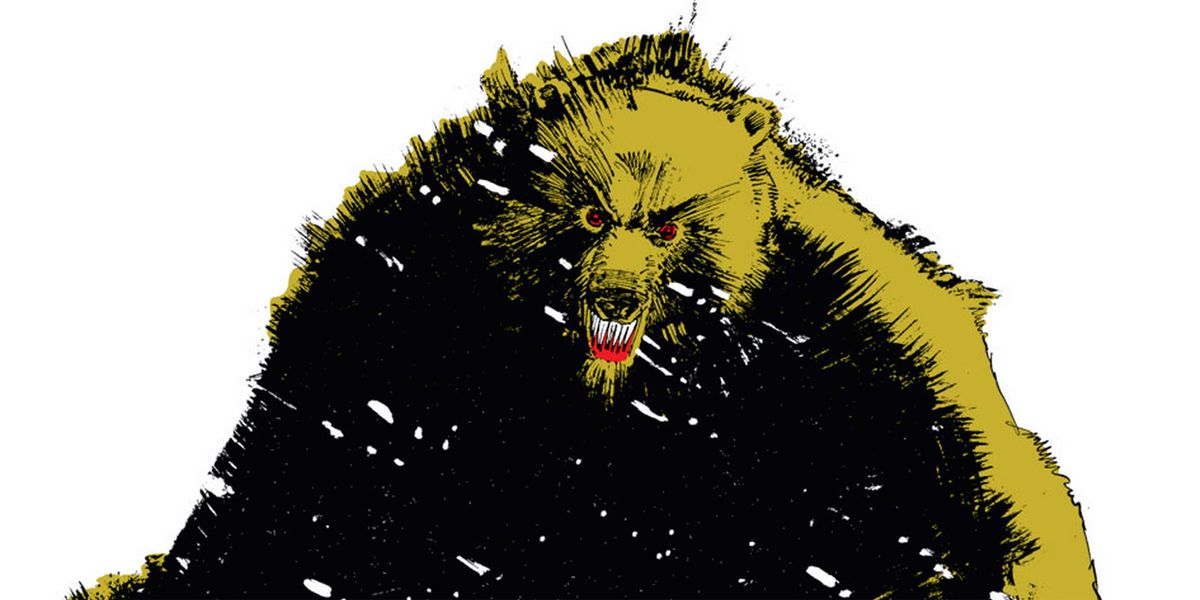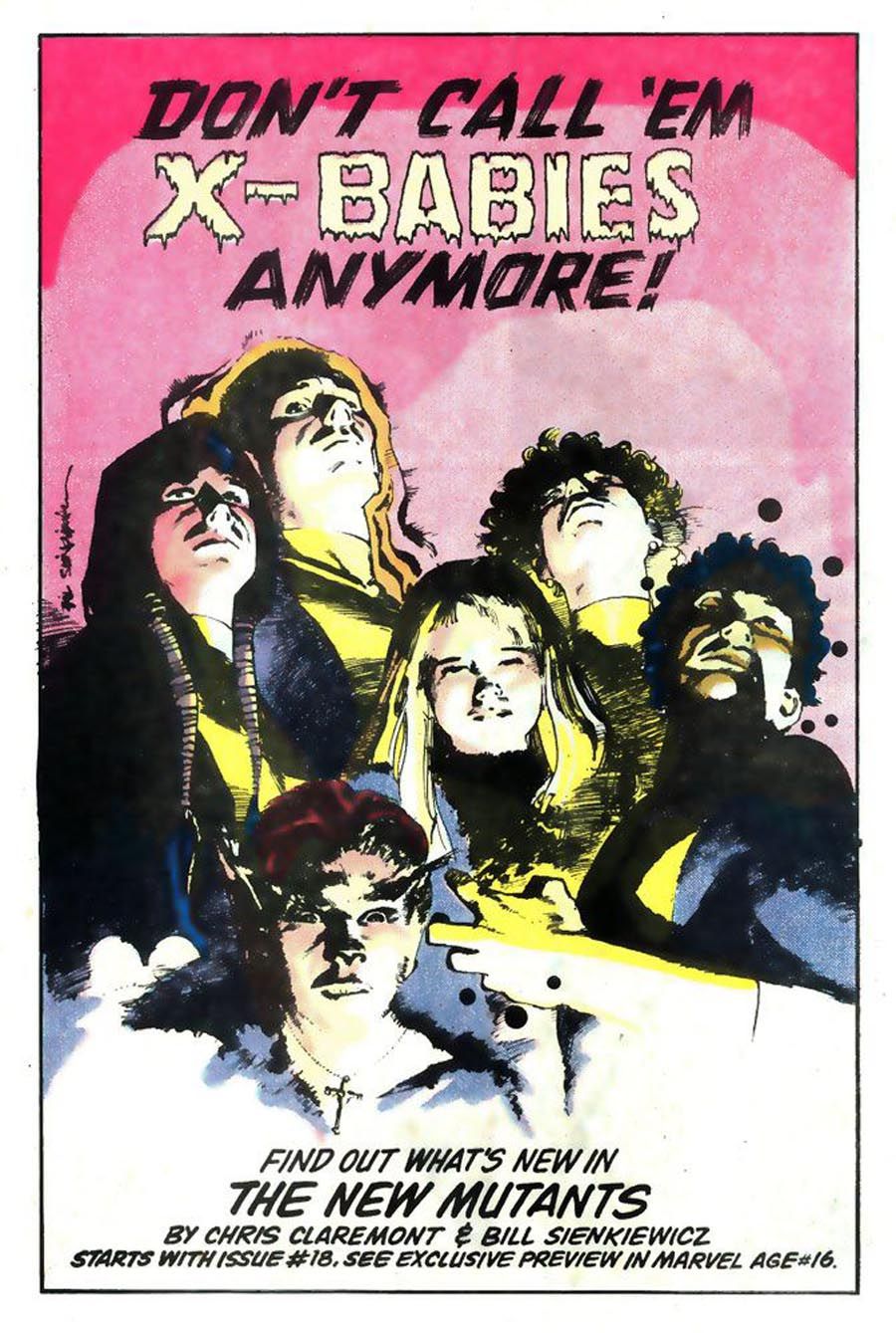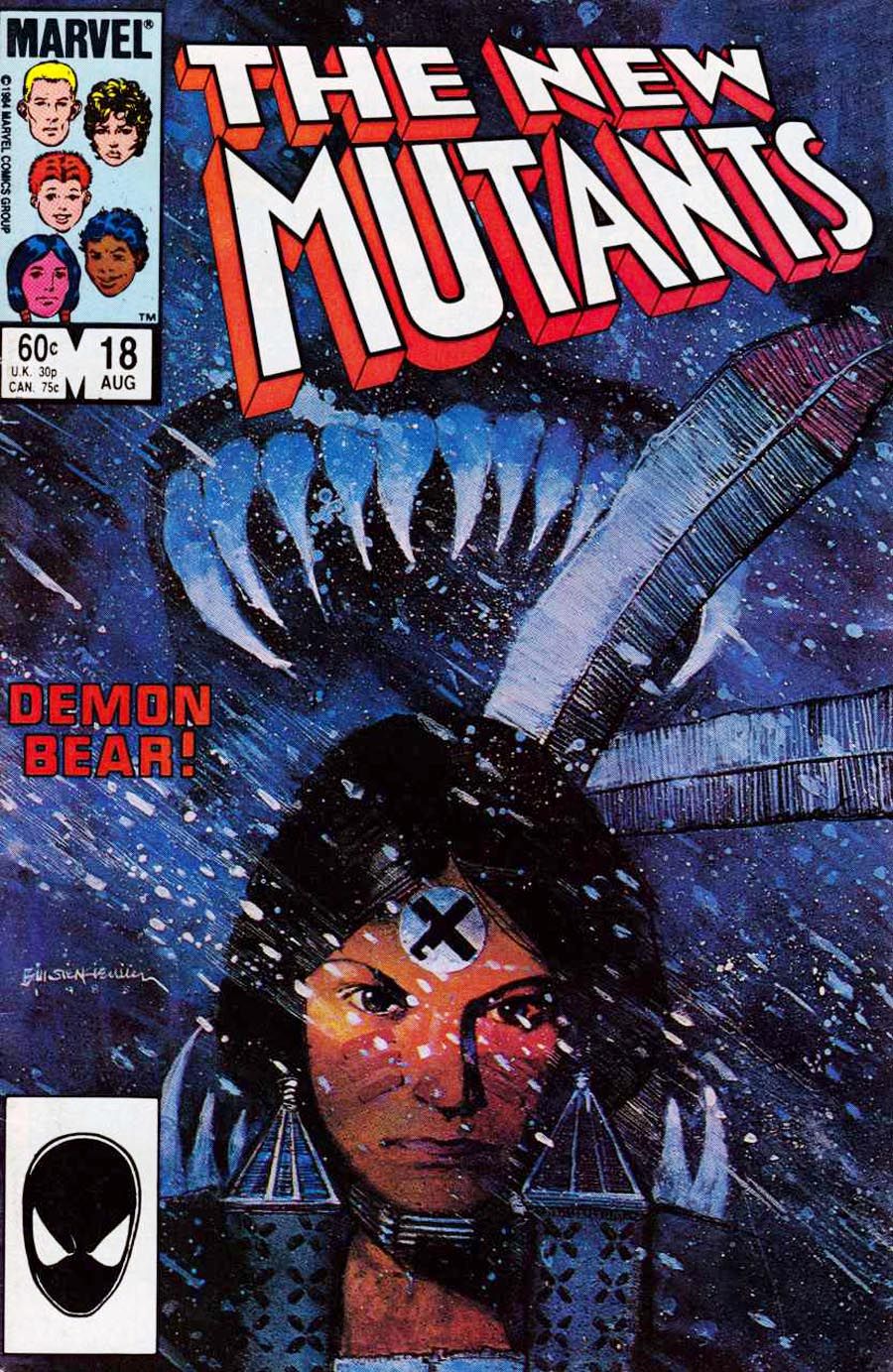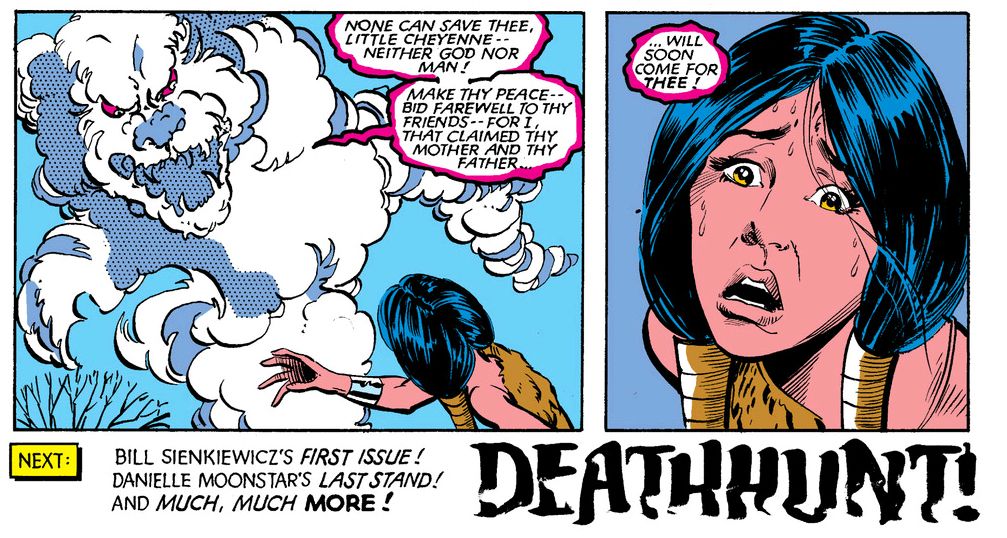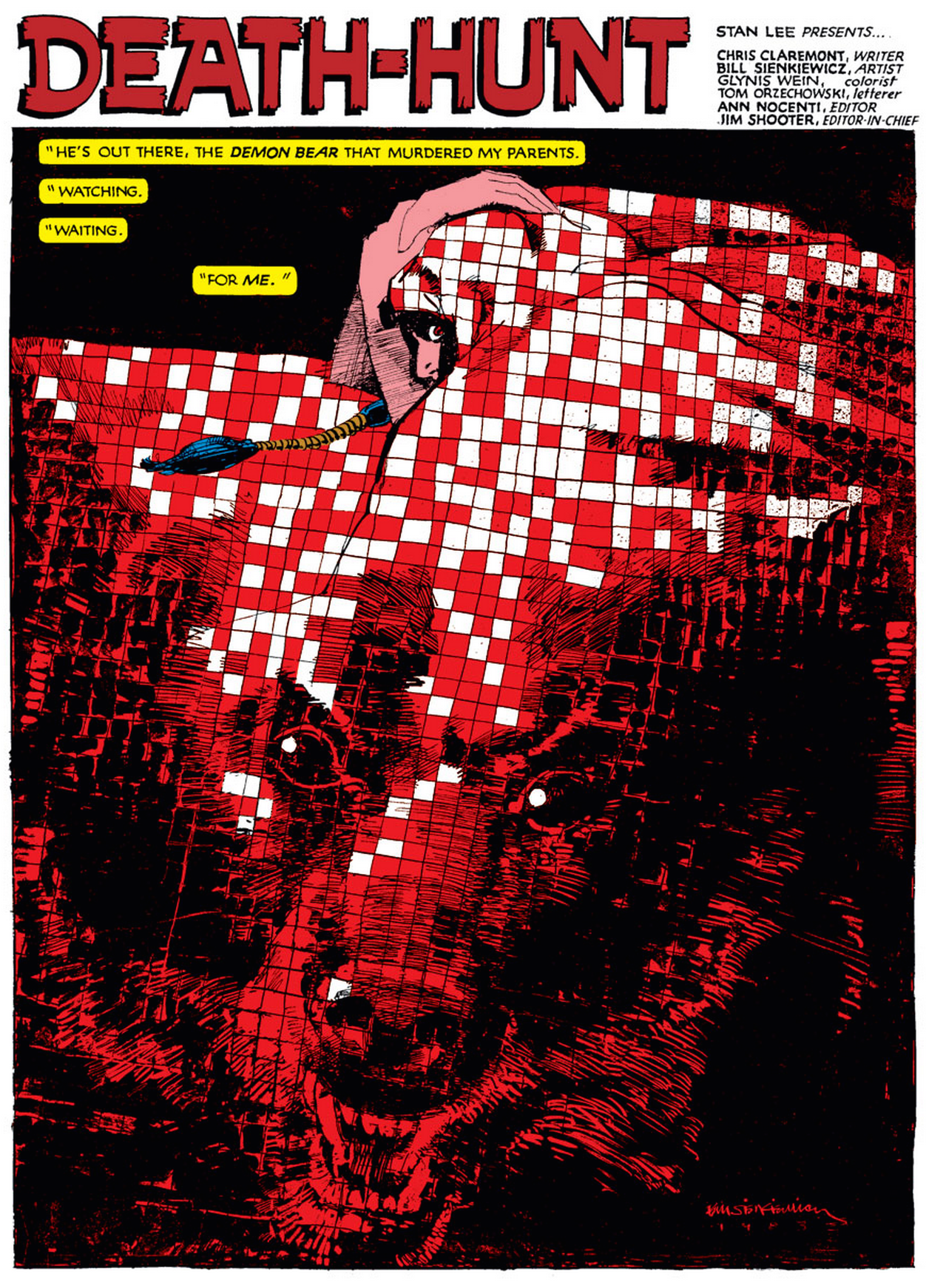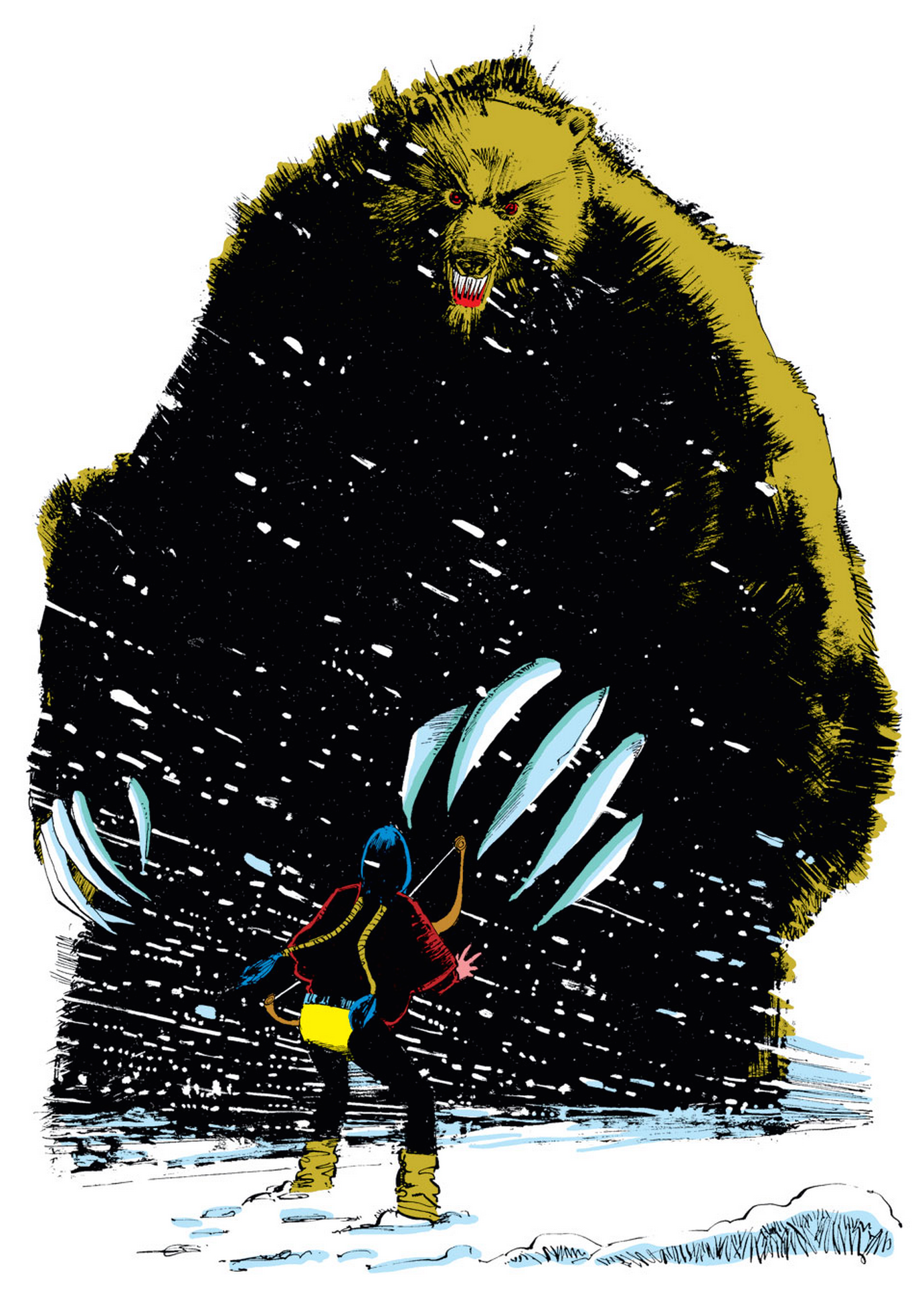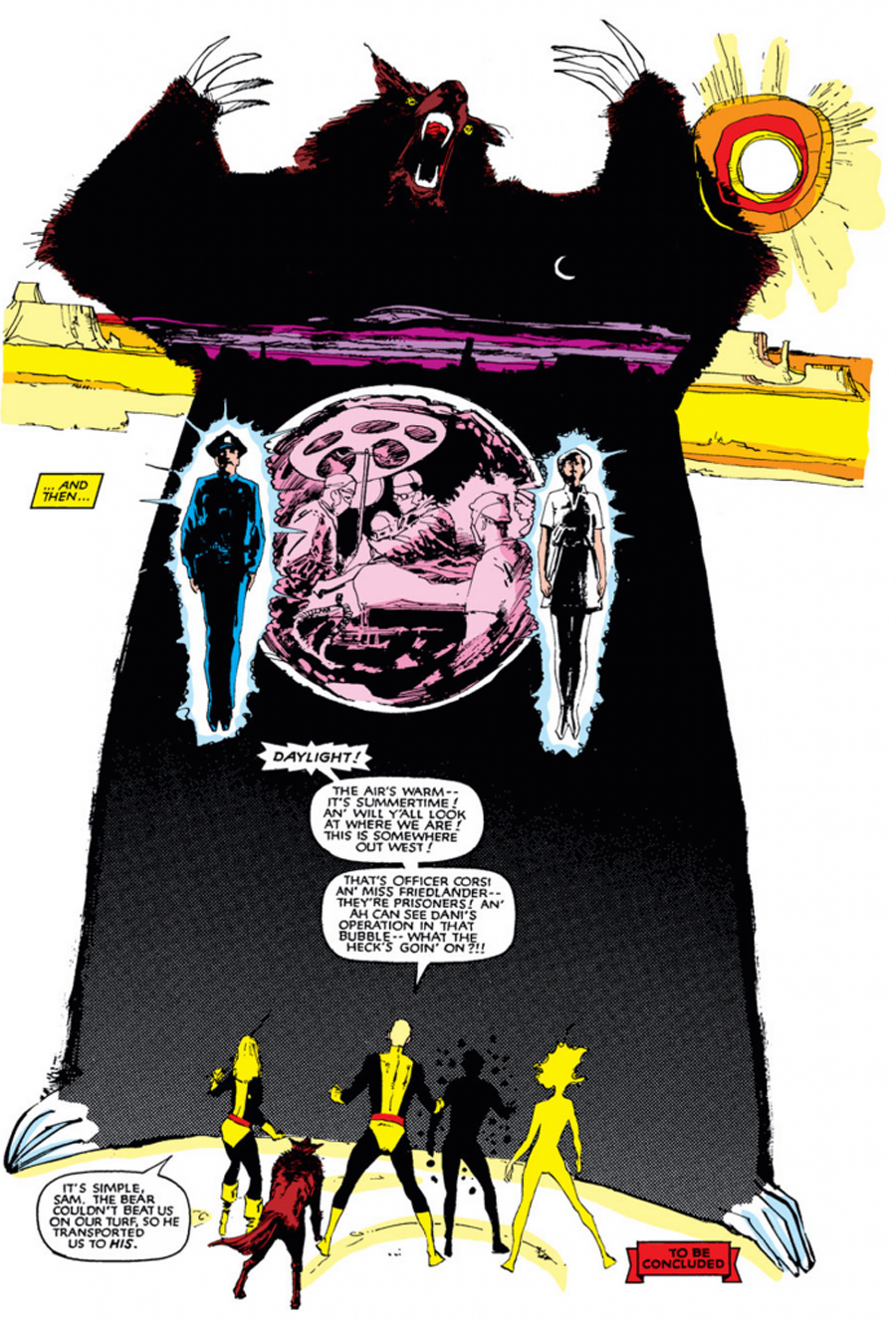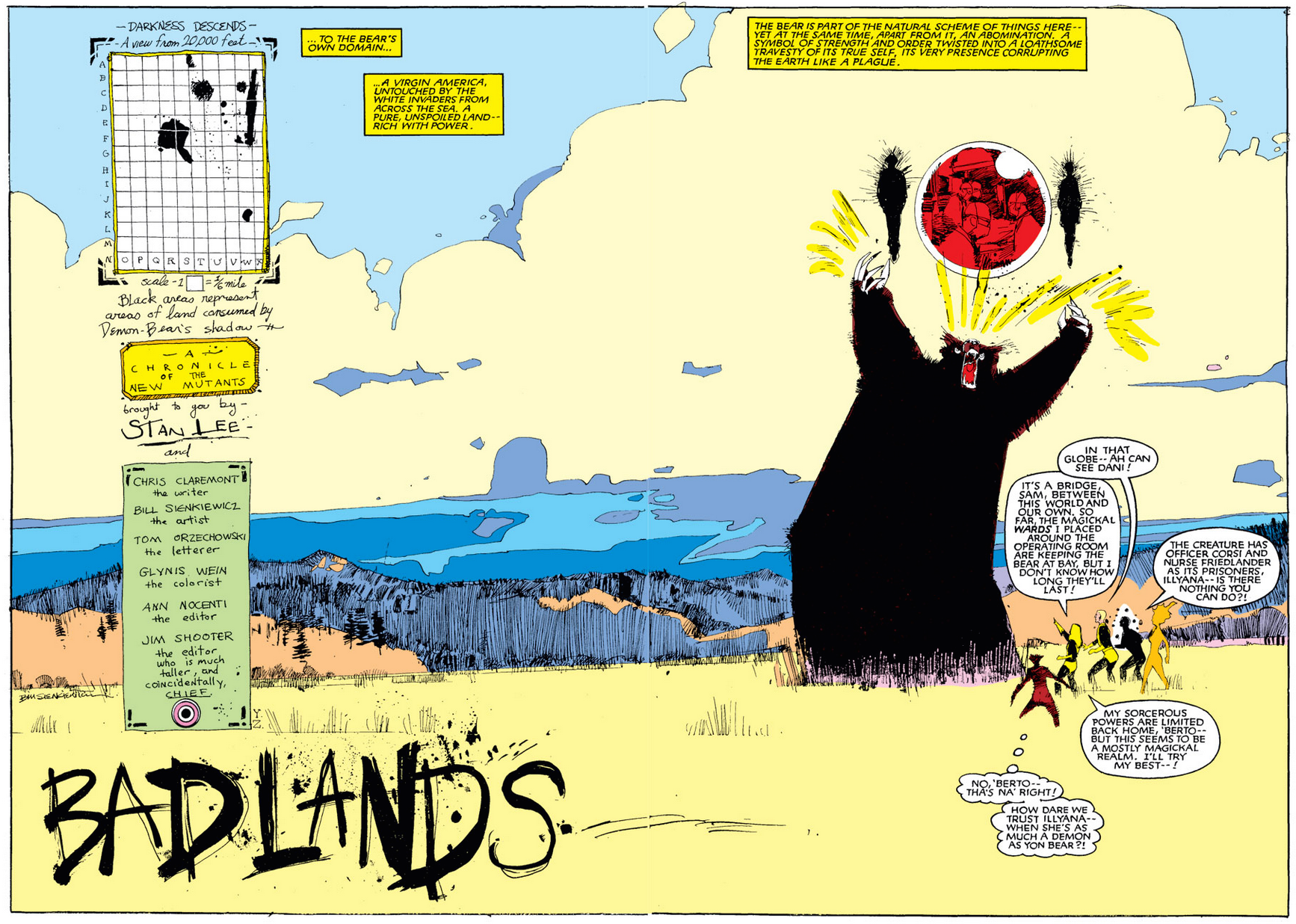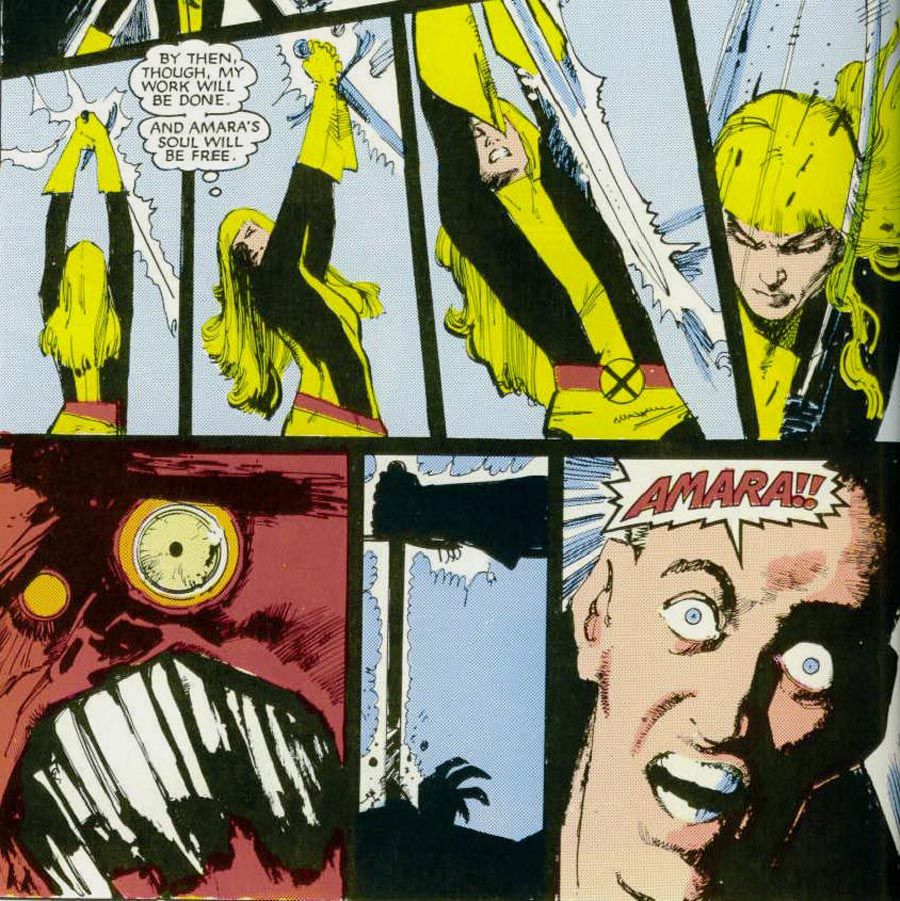The revelation on Thursday that Fox's long-discussed "New Mutants" movie will apparently adapt "The Demon Bear Saga" undoubtedly had longtime X-Men readers feeling particularly thankful, but left more than a few newcomers wondering what the big deal is. Well, the Demon Bear is big -- enormous even -- and the three-issue 1984 story whose heart it forms is even larger. The arc is to "The New Mutants" what "The Dark Phoenix Saga" or "Days of Future Past" is to "The Uncanny X-Men," and its influence on comics is impossible to overstate.
Spanning "The New Mutants" #18-20, the storyline is significant not only for the boundary-pushing debut of Bill Sienkiewicz as the new regular artist but also for helping the X-Men spinoff to hit its stride. With "The Demon Bear Saga," the series moved into more mature storytelling, and out of the shadow of its parent title.
Although Marvel Comics trumpeted the arrival of Sienkiewicz, and of the storyline, with a house ad bearing the headline, "Don't Call 'Em X-Babies Anymore!," it's safe to say few readers were truly prepared for "The New Mutants" #18. After all, the series had been rather standard, and "safe," 1980s superhero fare until that point.
Created by famed X-Men writer Chris Claremont and artist Bob McLeod, "The New Mutants" arrived at a time when "The Uncanny X-Men" was certainly Marvel's, and perhaps also the industry's, most successful comic. The first of what would become many spinoffs, "The New Mutants" centered on the teenage students of Charles Xavier's School for Gifted Youngsters, most of whom became integral parts of X-Men mythology over the subsequent decades, and remain prominent to this day: Danielle Moonstar, aka Psyche/Mirage, who can create three-dimensional representations of her opponents' fears and wishes; Sam Guthrie, aka Cannonball, who becomes nigh-invulnerable as he rockets through the air; Xi'an Coy Manh, aka Karma, who can possess other people's bodies; Roberto da Costa, aka Sunspot, who gains superhuman strength from solar energy; and Rahne Sinclair, aka Wolfsbane, who's essentially a werewolf.
In the early issues of the series, illustrated first by McLeod and then by Sal Buscema, both solid superhero artists of the 1970s and '80s, the team members grapple with teen angst, Danger Room training and their own powers, cross paths with Team America, lose a member with the apparent death of Karma, tangle with the Hellfire Club and their young apprentices the Hellions, and discover an ancient Roman civilization hidden within the Amazon rainforest (where they add the lava-controlling Amara Aquilla, aka Magma, to their ranks). You know, standard '80s superhero fare.
And then comes Issue #18, "Death-Hunt," in which the tone of the series shifts dramatically as Sienkiewicz comes on board, Danielle Moonstar confronts her demons, both figurative and literal, and the New Mutants are forced to overcome self-doubt and distrust and unite to save the life of their teammate.
Integral to Dani's origin, the Demon Bear had been a presence in "The New Mutants" since the earliest issues. A Cheyenne whose mutant abilities manifested at puberty, Danielle had a horrifying vision of her parents being killed by a demonic bear. When her folks disappear while on a hunting trip weeks later, a guilt-ridden Dani presumes her projection of her father's greatest fear, the Demon Bear, foretold or caused her parents' deaths. Shunned by her own people, but not quite fitting in at Xavier's School, she's trapped between worlds. Yet she vows to remain true to her name and to her heritage.
Although her classmates largely dismiss talk of a spirit bear -- "After all, who b'lieves in magic?" Sam Guthrie says -- Dani is convinced it's real, and stalking her. Plagued by dreams of the creature, she trains in the early pages of Issue 18 for the confrontation that she knows is inevitable. The building tension wouldn't be nearly as excruciating if readers were left with the image of the Demon Bear teased on the final page of the previous issue:
Drawn by Sal Buscema, the creature of Dani's nightmares is almost cuddly, like a smoky, Old English-speaking Care Bear. However, "Death-Hunt" opens with what Jay Edidin describes as “the page that changed comics" -- and it's terrifying. With that one image, Sienkiewicz, aided magnificently by colorist Glynis Wein, signals that readers aren't in for merely another superhero story; this is supernatural horror.
Wearing war paint and armed only with a bow and arrows, Dani walks out of Xavier's School and into the wintry night to summon the murderer of her parents and the beast of her nightmares. But what appears isn't a Danger Room illusion or a talking cloud, but rather a creature so enormous the page can barely contain it. Sienkiewicz's depiction of the Demon Bear is raw, savage, and clearly not of this world.
Despite her training and determination, and despite seemingly felling the beast, Dani is no match for the Demon Bear. Her bloody, broken body is found by her classmates and whisked away to the hospital, where the situation somehow moves from bad to worse amid a raging snowstorm that strands the New Mutants in the building even as the creature moves in to finish off Dani.
But although "The Demon Bear Saga" is Danielle Moonstar's story, she spends two of its three issues on the operating table. Into that void steps Illyana Rasputin, the younger sister of Colossus who spent much of her life in Limbo, ultimately becoming its ruler. (That's her, of course, in the movie's storyboard animatic, accompanied by the temperamental alien dragon Lockheed, who doesn't actually play a role in the original storyline.) Distrusted by her classmates, who only recently learned of her magical nature and demonic past, Illyana is until this point a New Mutant in name only. Yet she and Dani are effectively two sides of the same coin.
“Where Storm and Phoenix personified alternative visions of feminist liberation in the previous decade, Dani and Illyana now stood in for varied experiences of generational trauma," Ramzi Fawaz writes in his book “The New Mutants: Superheroes and the Radical Imagination of American Comics." "They respectively manifested the struggle to make peace with one’s indigenous heritage and the process of mourning the premature loss of childhood innocence.”
Described by Fawaz as a liminal figure that “exists between the binaries of good and evil, innocence and corruption,” it's Illyana who offers the best hope of protecting the defenseless Dani from the Demon Bear. Casting mystical wards around the hospital's generator and operating room, she succeeds on one level, only for the creature teleport the New Mutants, Officer Tom Corsi and nurse Sharon Friedlander to its own mystical domain. It's here, with "The New Mutants" #20, that the story gets incredibly, fantastically strange. And that's saying a lot, considering that in addition to the main plot, the previous two issues dipped into the "Days of Future Past" timeline with a brief, largely unexplained, visit by a distraught Rachel Summers, teased the arrival of the techno-organic alien Warlock and checked in on the space pirates the Starjammers.
As the setting shifts from Mid-County Medical Center to the Badlands of the issue's title, Sienkiewicz and Wein grow even bolder with the visuals, and Claremont's story takes on political and more overtly cultural tones. The Demon Bear's domain is a representation of the American West, "untouched by the white invaders from across the sea, a pure, unspoiled land -- rich with power." The creature, the narrative caption explains, is "part of the natural scheme of things here -- yet at the same time, apart from it, an abomination." It seems it too is a liminal figure.
"By identifying the Demon Bear as 'part of the natural scheme' of the Badlands yet also an 'abomination ... apart from it,' the narrative invoked the central trauma at the core of indigenous identity as a category that simultaneously describes an original state of natural belonging as well as the violent dispossession of that attachment by genocide and forced migration," Fawaz writes, adding, "The Demon Bear embodied these horrors in the form of the foundational indigenous trauma, the genocide of Native American people."
However, neither Claremont nor the New Mutants dwell on those weighty issues, as the teens not only have to reckon with a gargantuan mystical bear but also Corsi and Friedlander, whom the creature has possessed (it is a Claremont story after all) and transformed into its demonic puppets. In the middle of it all is an enormous red sphere that offers a window into the operating room and a reminder of what's at stake.
Like Dani, Illyana struggles here with identity issues. Armed with her Soulsword, Illyana here discovers her eldritch armor, which first appears on her body when she's clawed by the Demon Bear and then struck by Cannonball when he mistakenly believes she killed a possessed Magma. As the bear's shadow threatens to eclipse the Badlands, Wolfsbane realizes that it's the Soulsword, coupled with old-fashioned mutant teamwork, that's the key to destroying the beast.
When Illyana slices the Demon Bear in half, things get really, really weird. Like a hellish Little Red Riding Hood, out steps Dani's parents, alive and well -- "We were the bear, Sam, until you freed us" -- to explain that Corsi and Friedlander, who were formerly white, are now ... Native Americans. "Their bodies were reshaped before they were possessed," Dani's father says matter-of-factly. "You drove out their demonic natures, but that didn't affect the original enchantment." It's a problematic, and incredibly uncomfortable, element in an otherwise-solid story; we'll wager it probably won't make it into the Fox adaptation.
As much as "The Demon Bear Saga" belongs to Dani and Illyana, it also belongs to Sienkiewicz, who in those three issues transformed mainstream superhero comics of the era. It's difficult to express today just how far he pushed the envelope, and how jarring (if ultimately eye-opening) the change was between issues 17 and 18. It was a bold move on Marvel's part -- one that paid off many times over -- but it wasn't without controversy.
However, now it's virtually impossible to imagine any other artist of the period illustrating the story, with its Demon Bear with mismatched, hypnotizing eyes and oversized teeth and claws, and a body that seems to consume every inch of space it's allotted. No smoky Care Bear could have imbued the story with the weight, and the horror, that this story requires.
Fox's approach to the "New Mutants" movie is being characterized as "Stephen King meets John Hughes," which only scratches the surface of "The Demon Bear Saga." But if the adaptation can capture even a fraction of the energy that Claremont, Sienkiewicz and Wein channeled into those three issues, moviegoers -- and comics fans -- will undoubtedly consider themselves lucky indeed.

